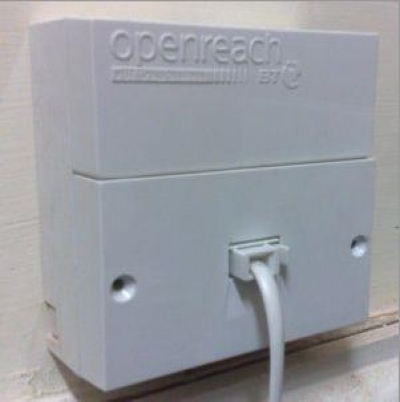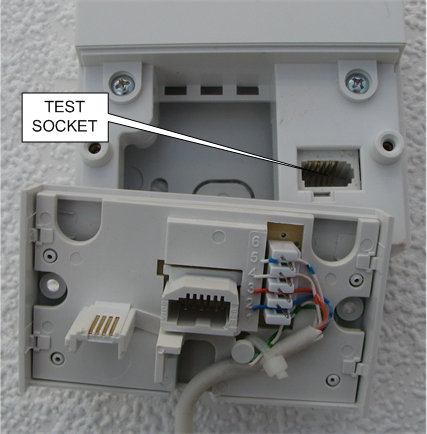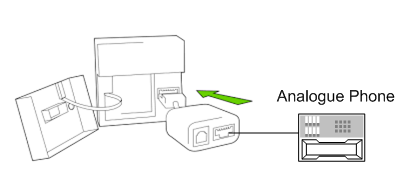Eliminate slow Broadband due to faulty BT Line
If you have a slow ADSL broadband the first thing to do is eliminate a faulty line coming to the building. The best way to test this is to run a Quite Line Test. This test is not the most scientific and relies on the sensitivity of the human ear. However your ear is very good at picking up noise interference when it is supposed to be dead quiet.
This test pin-points interference between the Exchange and Master socket (the demarcation entry point into the building). Problems here can only be fixed by the line provider, e.g. BT.
Quite Line Test
For the test you will require a good analogue phone; Broadband line filter and a Master socket. The Master socket is located nearest to where the the copper pair from the street enters the building. If you don’t have a Master socket find the phone socket closest to the BT line entry point into the house. You also you need to be in a quiet room without noise.
The reason to be at the Master socket is to rule out interference from inside the building. You can remove the lower panel from the Master which disconnects all the extensions in the house and reveals single phone socket. BT calls this the Test Socket. The Test Socket is the direct connection to the BT cable in the street. If you don’t have a Master socket remove all phone devices from extensions within the house before starting the test.
Connect your analogue phone to the Broadband filter (disconnect router ADSL cable if one is connected) and plug the filter into Test Socket or phone socket closest to the BT line,
Dial 17070
At the time of writing you will hear a female voice pre-recorded voice say:
- This circuit is defined as 01234 123123 <= your phone number
- Openreach line test facilities
- Please press 1 for ring back, 2 for quiet line, 3 for fast test, 4 for fact cleanse or clear down.
- [message repeats 3 times]
Note: the other options are for engineers only.
Select option 2 (quiet line) and listen to what you hear. You should hear perfect silence on the line – there should be no pops, clicks, whistles, buzzing and the like. If you do not hear silence first check that it is not the phone you are using, wriggle the cable a bit to see if that affects it, if not then you know you have a problem with your line to the BT exchange. Any problems with ADSL connectivity (low speed, connections dropping, etc) are likely caused by this and can only be addressed by BT.
You can now put your Master socket together (reconnect extension devices) to re-enable all phones in your house or for those without a Master socket reconnect all your extension phone devices.
Testing Internal Wiring
After reconnecting your phone equipment you can repeat the same test. If you hear now hear noise on the line you can put it down to your internal wiring. Things to check for are cables running near transformers or motors and compressors introducing EMF noise on the line and faulty phone equipment, such DECT base units, injecting noise. To track down these remove all phone equipment and reconnect each one at a time and repeat the test until you track down the unit causing the noise,
BT Telephone Wiring
BT colour coded Master and Extension wiring
BT Drop Cable (cable coming from outside the building)
This often has Orange, White, Green and Black wires. Usually (but not always) Orange and White are the active pair and go to two connectors marked A and B ( link to 2& 5). A and B connection points are accessed by removing the Master socket from the wall.
Which way around the A and B pair is connected usually doesn’t matter but some modems and answering machines are fussy about polarity, so it’s best to check the voltage on the line using an analogue multimeter and connect -48V leg to B and 0V leg to A. To test which one is B set the multimeter to a higher voltage range, e.g. 100 – 200V and watch which way the needle swings (setting to a high range is to prevent damage to the meter). If the red probe is connected to B and the black to A the needle will swing in the wrong (negative) direction. Therefore the red is connected to B. Reversing the red and black and setting the multimeter to the correct range, e.g. 0 – 100V should give you a measurable voltage of around 48V.
References: many thanks to Anomalous Aperture, and WPP Project Management & Telecommunications for their excellent telecommunication web sites and contributions to this web page




